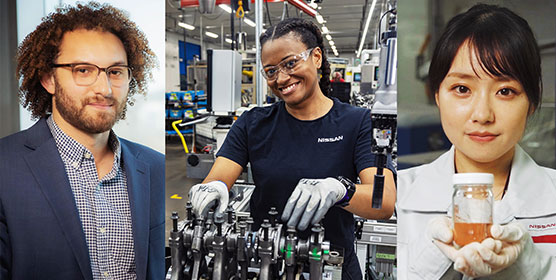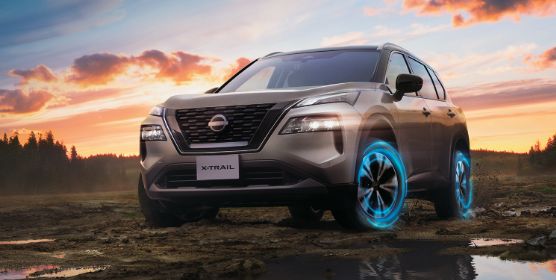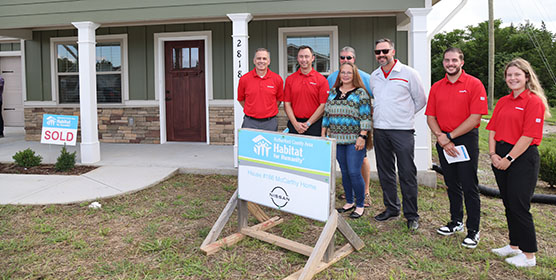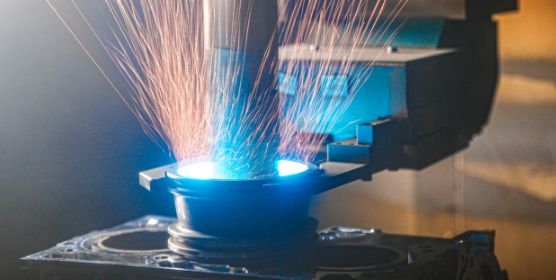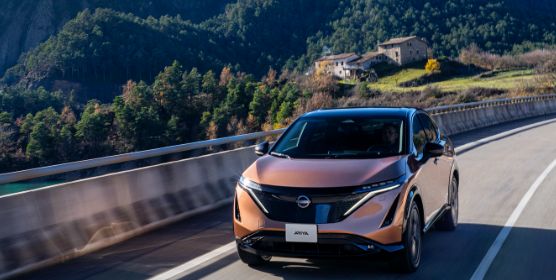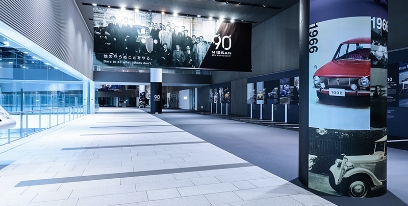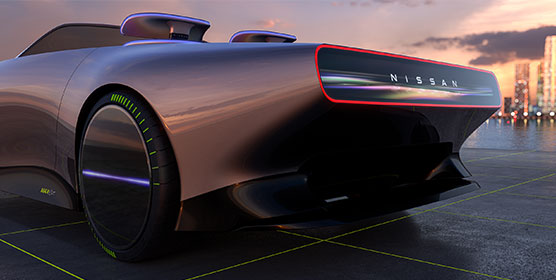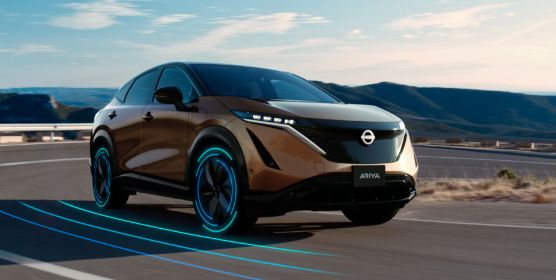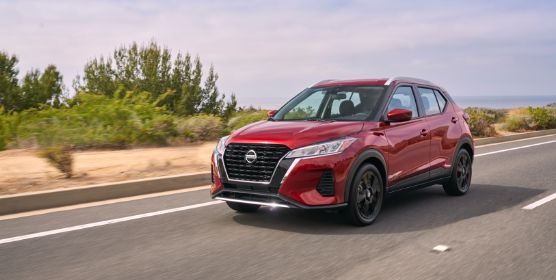Spies in the Desert

The vast desert of the Middle East. Cars drive across the sands. Among the locals at the wheel there is one Japanese engineer. But he's not on vacation. He's on a mission.
"When I went to the Middle East I spent my time in desert because there I could get to know the real way people live in the region," explains Shoichi Seto, engineer with the Nissan Market Requirement Investigation Group.
From 1999 to the present the team has performed market surveys for Nissan in a round-the-world trip taking in some eighty countries. Their mission: To look at how automobiles are used in each country, to talk with and listen to the people, and experience the conditions of each environment. This is what you cannot learn from Japan, the precise needs and expectations on a car due to the lifestyles of people living in a certain locale.

Surveying the local people, the researchers learn how cars are used in desert regions like the Middle East.
For
example,
in
parts
of
Russia
where
roads
are
not
well
maintained,
drivers
use
their
wipers
as
much
to
remove
splashes
of
mud
as
they
do
to
wash
away
rain.
Local
stores
sell
windscreen
washer
fluid
in
large
five-liter
bottles
to
meet
the
needs
of
drivers
and
the
roads.
Cars
also
then
need
a
storage
tank
that
can
hold
this
amount
of
washer
fluid.
In India you'll notice that many cars drive around with their wing mirrors folded in, since otherwise vehicles would clip each other in the narrow streets. For Indian drivers, keeping an eye on the car behind is not as important as navigating through traffic around you.
Meanwhile in Indonesia, a standard family car is actually a six-seater. A married couple will likely have four children, in addition to a babysitter and driver, so three rows of seats are a must for any family vehicle.
The way a car is used is defined by regional and national traits. Any vehicle being sold in a market must reflect the local identity and needs if it wants to be embraced by drivers.

In Russia windshield wiper washer fluid is sold in 5-liter bottles as drivers there get through a lot.
But
just
asking
locals
"What
kind
of
car
do
you
want?"
may
not
give
you
the
best
answers.
It
can
be
surprisingly
hard
to
answer
questions
about
the
special
characteristics
of
your
lifestyle
or
car
needs.
So
the
Market
Requirements
Investigation
Group
has
to
behave
like
a
team
of
spies,
gathering
information
from
carefully
watching
the
actions
and
habits
of
locals,
and
then
gleaning
the
hidden
driving
secrets
out
of
this
reconnaissance.
Engineer Hidekatsu Yanai says, "If you perform a market survey you notice that often what people say and what they do are not the same. That's why it is important to actually go to the area and observe first-hand."
Before they can go off on their expedition, though, the researchers need to study the historical and cultural background of each "target" place. If you don't do your homework, you're going to be all at sea when you arrive. Sometimes it's practicalities like left-hand drive or right-hand drive, or it might be religion or politics; these "spies" must also be scholars, putting real secret agents to shame.

Hidekatsu Yanai researches watermelon farmers in Tunisia, who use the beds of pickup trucks for transporting their crops.
This kind of field research by engineers is very Nissan-esque. By turning engineers into the researchers they can gain a bird's eye view of how cars are used on the ground, allowing them to then create better vehicles for the market.
Yet, Masako Kuwahara explains, "just because there is a certain condition and people want a certain kind of car does not mean we manufacture it."
Does the demand for a "wider" backseat mean that overall size is important or that it would be better if people's knees just had more space? Making these judgments in the field, the team presents ways to overcome technical hurdles and then take back home to Japan a feasible recommendation. Good survey data is one thing, but it has to be helpful for actually building a car.
To wrap up their trip, the team holds an internal debriefing session, making presentations while wearing the ethnic clothes that they bought at each of the places they visited.
This isn't just dressing up for fun; it's proof that the spies really inserted themselves into the daily lives of the locals
All around the world these research spies are now deep undercover in exotic lands. If you spot an unfamiliar face next to you, don't be alarmed. It's probably just a Nissan engineer on a mission.





